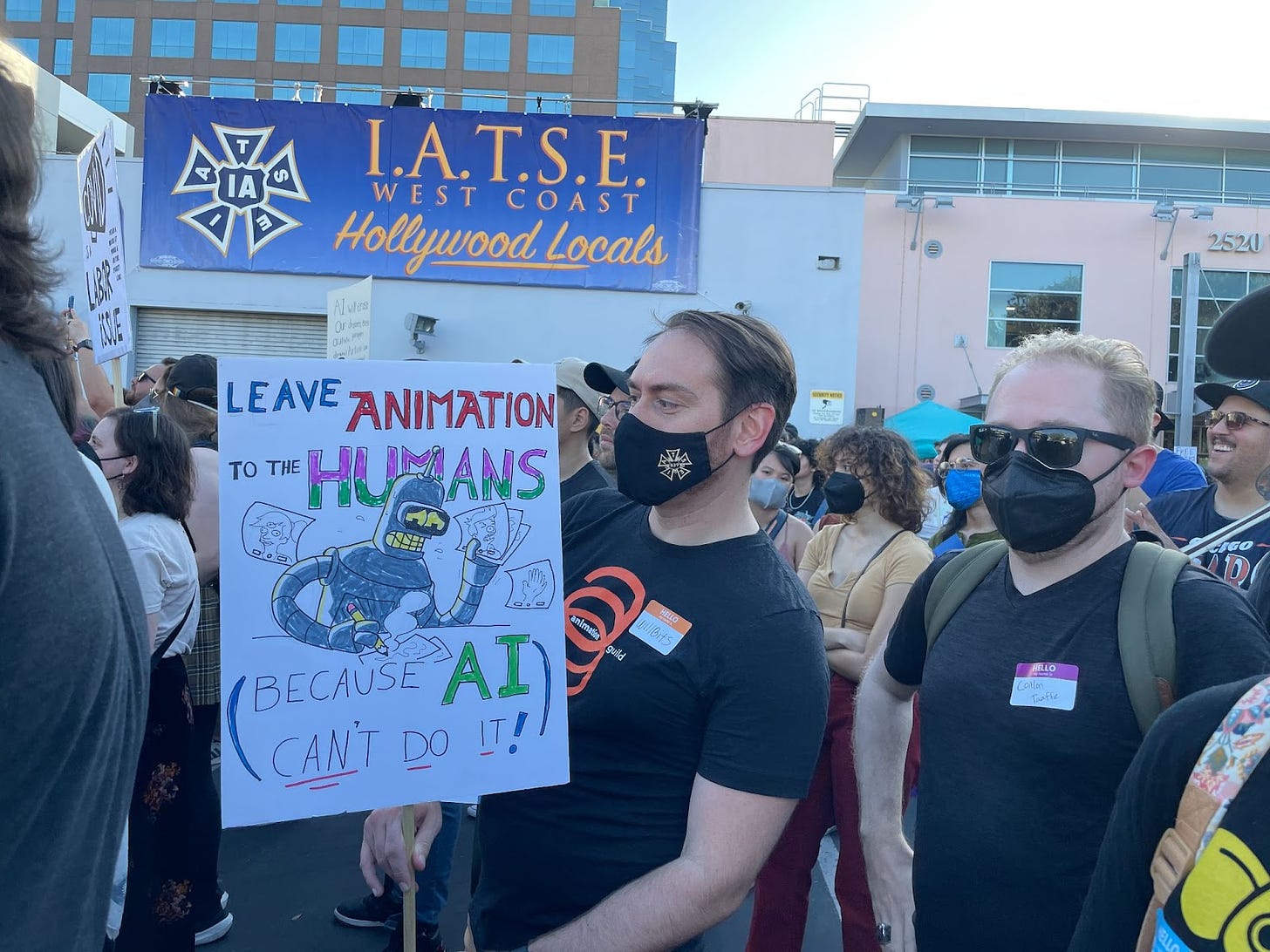
Hollywood’s Hot Labor Summer brought many of you to an earlier version of this newsletter last year, during the height of the Writers Guild and SAG-AFTRA strikes. Back then it was known as Strikegeist (get it? strike + zeitgeist), and it chronicled the day to day of the concurrent labor stoppages and what was at stake.
You might think the town’s labor uproar is behind us with the recent inking of new IATSE and Teamster contracts. After all, TV and film production can resume in earnest again without the threat of another shutdown.
But you may not realize we are actually already in the midst of another Hot Labor Summer: SAG-AFTRA is on strike over one of its contracts at this very moment, and animation workers are entering negotiations today with the major studios.
So consider this a Strikegeist special, folks.
Here’s the tl;dr version: Since July 26, SAG-AFTRA performers have been on strike, specifically over the interactive media agreement with major video game publishers including Activision, Disney Character Voices, Electronic Arts, Insomniac Games and WB Games. A year and a half of negotiations produced an agreement on wages, benefits — in fact, every issue on the table, save one: AI.
Separately, today marks the start of negotiations between the Animation Guild (aka TAG or IATSE Local 839) and the Alliance of Motion Picture and Television Producers (AMPTP) that reps the major Hollywood studios. The union’s major concerns? Layoffs, outsourcing and . . . AI — all of which have been major studio imperatives all year.
At the rambunctious Stand With Animation rally in Burbank on Saturday, an estimated 2,000 animation workers and supporters gathered in the parking lot of IATSE Local 80 on Olive in Burbank. They listened to an array of speakers — ranging from Burbank mayor Nick Schultz to WGA member (and familiar picket line face) Adam Conover — sounding off on the tech troubles that have plagued their industry.
“Producers have taken advantage of evolving technology to cut back on crew sizes and outsource work for years,” storyboard artist and writer Nora Meek told the crowd. “Character layout, in-house animation, even editing — entire departments that used to be staffed by dozens of people are downsized or gone, and all that work gets heaped onto whoever’s left, like storyboard artists, for no extra pay. And with AI coming towards us, tell me, how many artists do you think the company wants to hire five years down the line? Zero. We don’t have work-life balance. We have burnout, repetitive strain injuries and shorter jobs that demand more and more.”
Yep, we’ve got a fresh AI battle front and center. Lest you think video games and animation are niche concerns, these are the fronts that will set the foundation for how the next generation of Hollywood approaches AI.
“Anybody who thinks that this is a minor issue or a small thing, I think is mistaken, especially because these AI battles are really bigger than they even seem,” SAG-AFTRA chief negotiator Duncan Crabtree-Ireland tells me. “Because what we’re trying to do is establish the rules of the road for how this plays out over the coming years. It’s something that matters, not only to our members, but even beyond that, to the general public. It ties in with our public policy battles. It ties in with our other contract negotiations. Every worker should have the right to expect to be treated ethically and respectfully as it relates to AI use.”
In today’s Series Business, you’ll learn:
-
What Animation Guild president Jeanette Moreno King (The Simpsons, Futurama) tells me about each studio creating its own proprietary AI tools
-
How SAG-AFTRA’s Crabtree-Ireland believes this video game negotiation will impact all 160,000 members
-
Where animators already are seeing evidence of AI today
-
What animators see could go sideways for their profession if the studios don’t set AI guidelines in this contract
-
How CG and storyboard artists are most at risk
-
What video game workers who do voiceover and motion-capture work fear most
-
Whether the AI protections that SAG-AFTRA negotiated for TV and film performers may be sufficient for video game workers